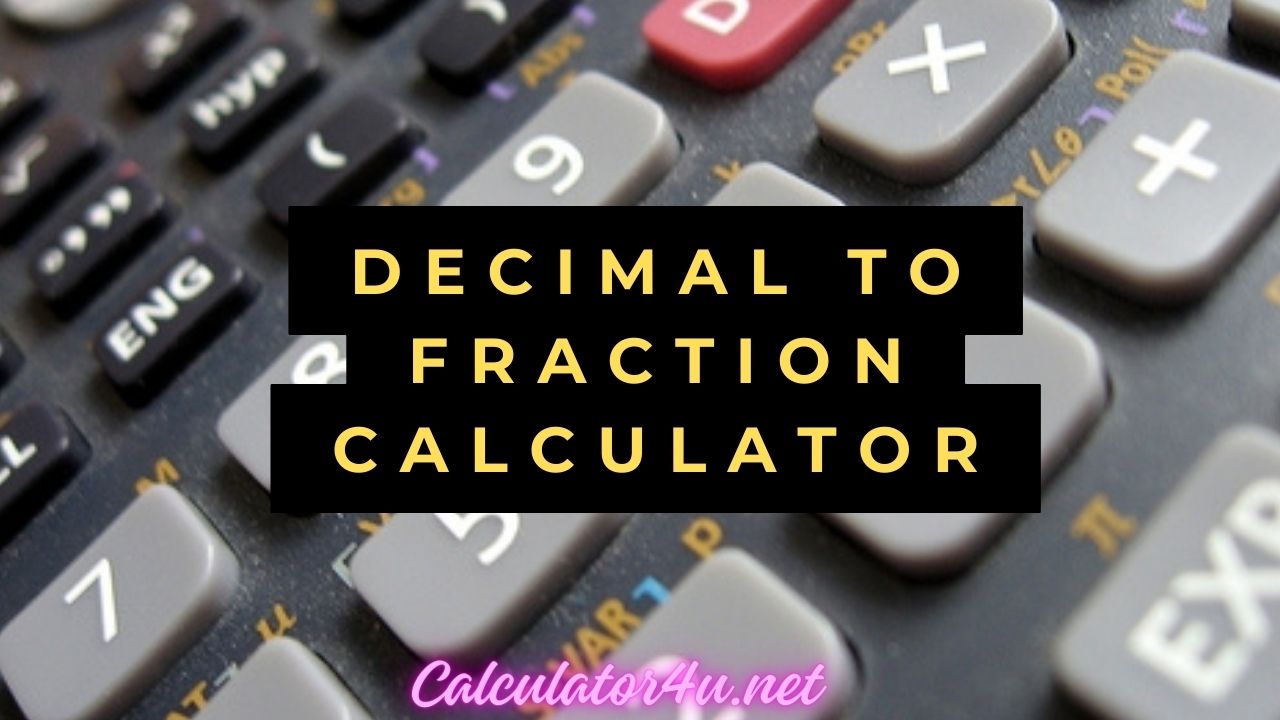Decimal to Fraction Calculator
- Decimal Place Value Calculator
- Decameter To Statute Miles Calculator
- Decameter To Meters Calculator
- Decameter To Inches Calculator
Decimal to Fraction Calculator with Steps
Quickly convert decimal numbers to fractions using the Decimal to Fraction Calculator. Learn how to input decimal values, apply the conversion algorithm, interpret results, and address common queries regarding fraction calculations. Simplify your mathematical conversions today!
Table of Contents
Decimal To Fraction Calculator
Welcome to our Decimal to Fraction Calculator guide. Converting decimal numbers to fractions is a fundamental operation in mathematics and everyday applications. In this article, we’ll explore how to use the Decimal to Fraction Calculator to perform conversions, understand their significance, and address common questions to enhance your understanding.
Decimal To Fraction Calculator Overview
Understanding Decimals and Fractions
- Decimal: A decimal number is a real number expressed in base-10 notation. It can have a finite number of digits or continue indefinitely.
- Fraction: A fraction represents a part of a whole or a ratio of two quantities. It consists of a numerator and a denominator separated by a fraction bar.
Importance of Decimal to Fraction Conversion
Converting decimals to fractions is important for several reasons:
- Common Representation: Fractions provide a concise and precise way to represent non-integer values.
- Everyday Applications: Used in various everyday scenarios, such as cooking, measurements, and financial calculations.
- Mathematical Operations: Facilitates arithmetic operations, comparisons, and simplifications involving non-integer values.
How the Calculator Works
Our Decimal to Fraction Calculator offers a user-friendly interface for converting decimals to fractions. You can input the decimal value, and the calculator will apply the conversion algorithm to determine the equivalent fraction.
Step-by-Step Guide to Using the Calculator
- Enter Decimal: Input the decimal value into the calculator.
- Compute Fraction: The calculator will apply the conversion algorithm to determine the equivalent fraction.
- Interpret Results: Review the computed fraction provided by the calculator.
Practical Applications
Decimal to fraction conversion has practical applications in various fields:
- Cooking and Recipes: Many recipes use fractional measurements, making decimal to fraction conversion essential for accurate cooking.
- Construction and Engineering: Fractional measurements are common in construction plans, blueprints, and engineering drawings.
- Finance: Fractional values are used in financial calculations, such as interest rates, loan terms, and investment returns.
Advantages of Using the Calculator
- Accuracy: Provides accurate conversions between decimals and fractions based on the input value.
- Efficiency: Saves time and effort by automating the conversion process, especially for complex or recurring calculations.
- Versatility: Can handle decimal values of any magnitude and provide corresponding fractional representations.
FAQs
Q: Can the calculator convert fractions to decimals as well?
A: No, this calculator is specifically designed for converting decimals to fractions. To convert fractions to decimals, you can perform division or use a fraction to decimal conversion tool.
Q: What if the decimal value is recurring or repeating? Can it still be converted to a fraction?
A: Yes, the calculator can handle recurring or repeating decimals and provide an accurate fractional representation.
Q: Are there any limitations to the decimal values that can be input?
A: The calculator can handle decimal values of any magnitude, including integers, but extremely large or small decimals may be subject to precision limitations inherent in numerical calculations.
Conclusion
In conclusion, the Decimal to Fraction Calculator offers a convenient and efficient way to convert decimal numbers to fractions. By following the steps outlined in this guide and utilizing the calculator’s features, you can simplify your mathematical conversions and gain insights into fractional representations.

